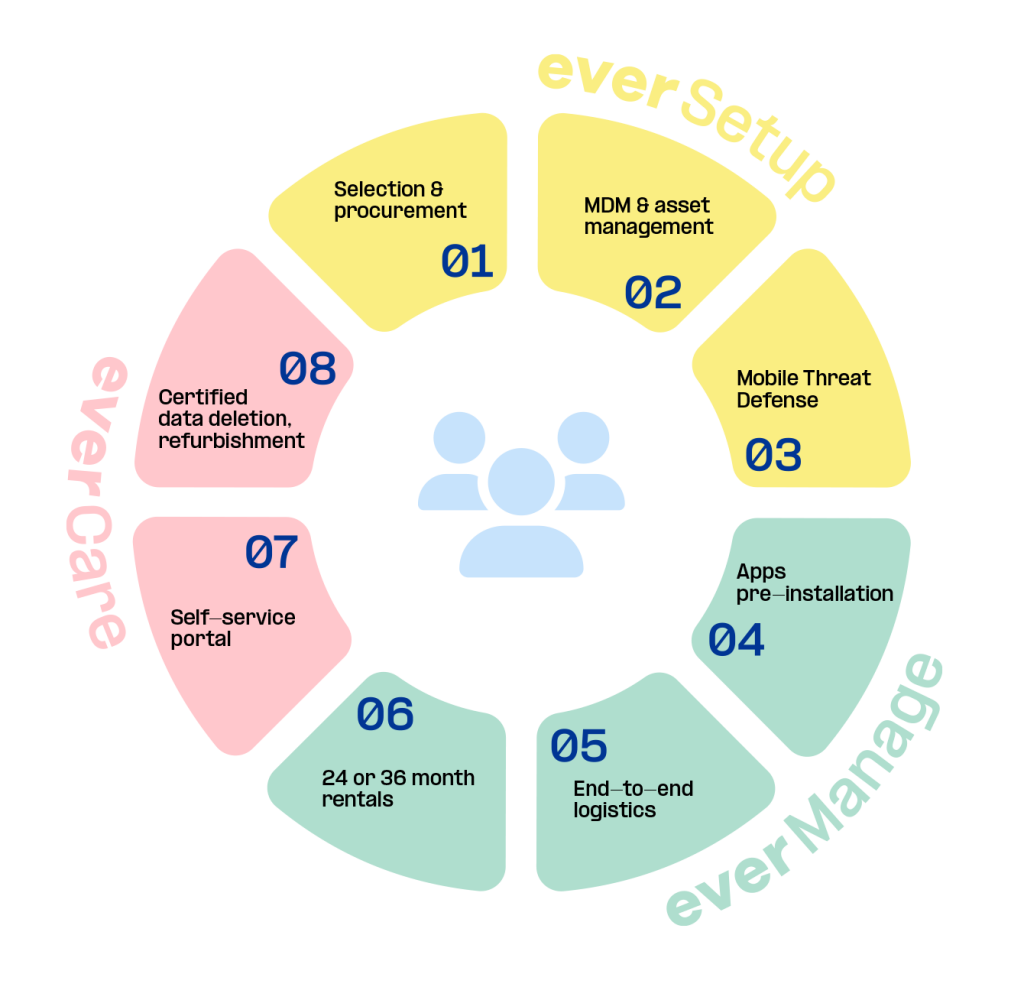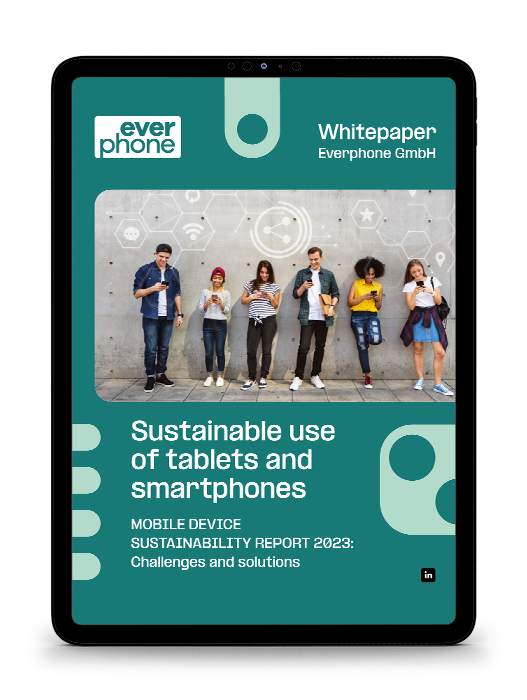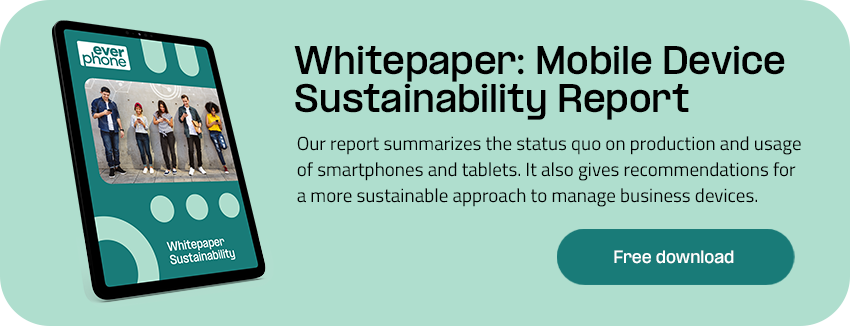Circular economy
Our glossary explains basic terms and abbreviations relating to mobile working, the use of smartphones and tablets in the corporate environment (Enterprise Mobility) and security aspects in the use of mobile devices.
Circular economy
Economic model
Circular economy is an economic model and concept that aims to use resources more efficiently, minimize waste and promote sustainable economic growth. In contrast to the linear economic model based on “produce, use, discard,” circular economy aims to extend the life cycle of products by continuously recycling, refurbishing, reusing and reusing materials, products and resources.
Three main principles of the Circular Economy
Design products for longevity and reuse.
Products should be designed to last longer, be repaired and reused. Using recyclable materials and considering the recycling process during design are also important.
Circular economy of materials
In the Circular Economy, products and materials are kept in circulation as much as possible, rather than ending up as waste after their useful life. This includes recycling materials, remanufacturing products and recovering raw materials from end-of-life components.
Business models for renting, sharing and leasing
Instead of owning products, they can be shared, rented or used as a service in a circular economy. This promotes use efficiency and reduces the need to always manufacture new products.
Circular economy aims to reduce environmental impact, reduce the consumption of finite resources, reduce dependence on imported raw materials, and reduce CO2 emissions. It is seen as a sustainable alternative to the traditional linear economic model and is gaining global traction as the challenges of climate change and resource scarcity become more pressing. Businesses, governments and consumers all play an important role in promoting and implementing the circular economy.

Read more:







